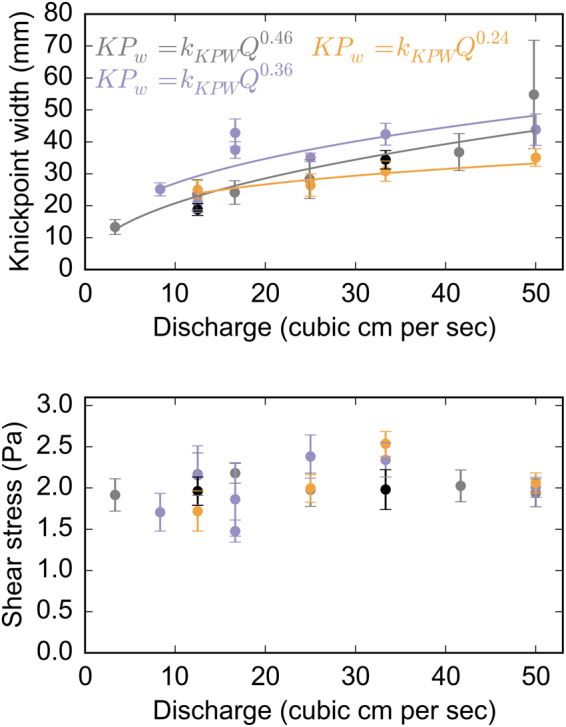Figure 4.

(A) Relationship between channel width at knickpoint lip and discharge for the experimental data. The data follow a power law such that wider channels are associated with higher discharges, with an exponent between 0.25–0.5, which is similar to those found in natural rivers23. (B) There is no clear trend between shear stress upstream of the knickpoint and discharge, suggesting the channels self-organise through variations in channel width (A), limiting any increase in shear stress that may drive increased knickpoint retreat rate. Error bars indicate 1 standard deviation of the shear stress values calculated for each experiment; the main source of uncertainty associated with the calculation of the water depth from the intensity of the laser return. Importantly, the shear stresses at the knickpoint lip are similar for each of the silica substrates, despite differences in the relative cohesion.
